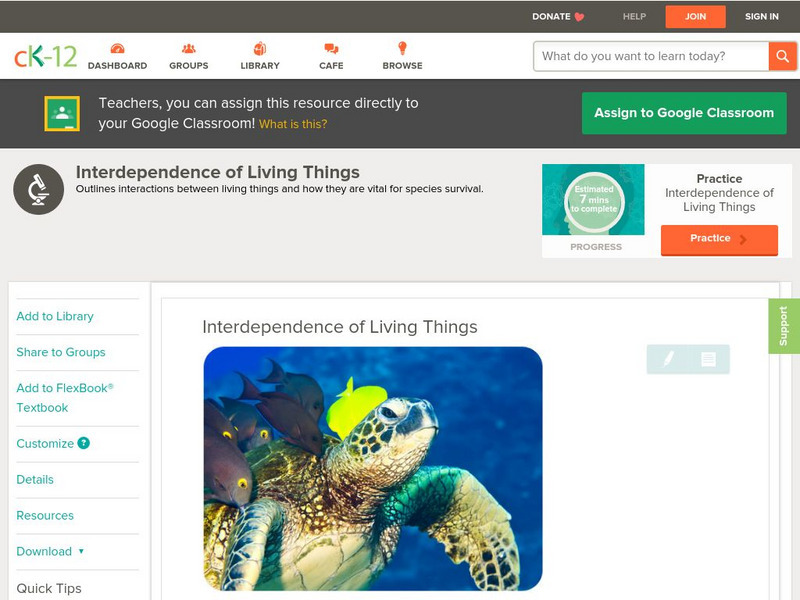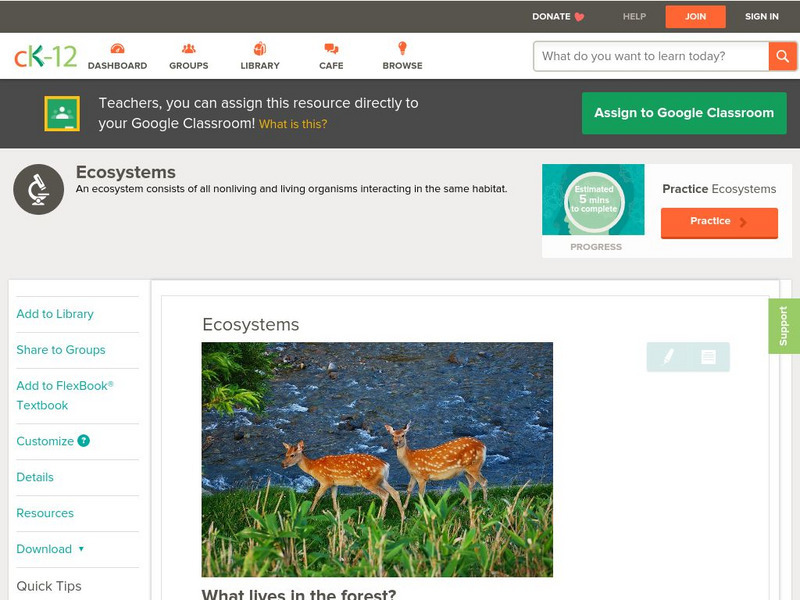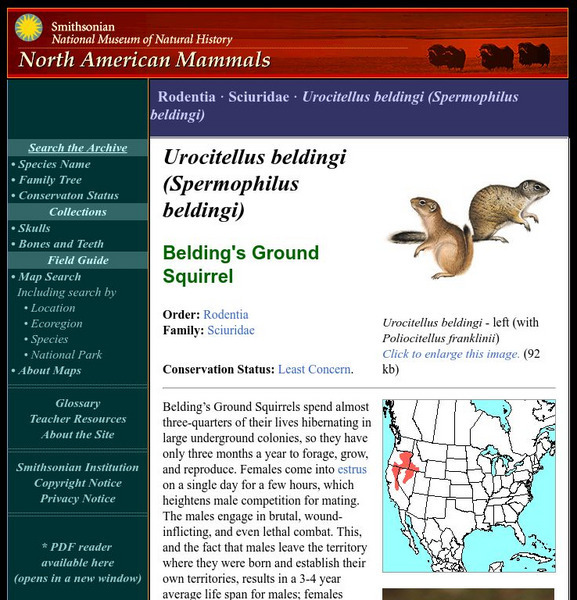Untamed Science
Untamed Science: Competition
This well-written article explains what competition in an ecosystem is and the different ways it can manifest itself. It also looks at how organisms avoid competition, some disadvantages and outcomes of competition, the impact of a...
Science Struck
Science Struck: Interspecific Competition: Definition, Examples
Interspecific competition in an ecosystem is explained, along with the different ways it can manifest itself. Includes examples in different types of biomes.
Concord Consortium
Concord Consortium: Stem Resources: Competition
An interactive activity where students study how two species of producers are affected by a consumer. By completing several virtual experiments and collecting data, students will be able to summarize what plants can do to defend...
CK-12 Foundation
Ck 12: Biology: Competition
[Free Registration/Login may be required to access all resource tools.] Describes how interspecific competition affects extinction and specialization.
Bio Topics
Bio Topics: Competition
Find out about what types of resources different species will compete to obtain. Answer competition questions by mousing over different pictures of animal and plants.
BiologyWise
Biology Wise: Competitive Exclusion Principle
The concept of competitive exclusion, explained here, states that two species cannot co-exist when needing the same, limited resources to survive. The different types are described and examples are provided.
NC State University
Nc State University: Population Dynamics
Students will understand the ecological concepts behind population dynamics of wildlife species.
Science Struck
Science Struck: Limiting Factors in the Desert Ecosystem
Describes conditions in a desert that limit how large populations of species can grow.
PBS
Pbs Learning Media: Coral Reef Connections
Dive in and explore what makes this beautiful world so fragile. In this Web feature, from the PBS series "Evolution," discover how coevolution has shaped the ecological relationships among reef creatures.
Annenberg Foundation
Annenberg Learner: The Habitable Planet: Ecology Lab
Create the parameters of your own ecosystem by choosing which producers and consumers live there. Visualize how the food web operates and species populations change. This simulator mimics the food web within a typical ecosystem and gives...
CK-12 Foundation
Ck 12: Biology: Interdependence of Living Things
[Free Registration/Login may be required to access all resource tools.] Covers how species interact with each other.
Biology 4 kids
Biology4 Kids: Relationships Between Organisms
Species interact every day. That interaction is a vital part of how organisms develop and change over time. When you study species, it is important to watch the way they interact with their surroundings. There are four basic types of...
TED Talks
Ted: Ted Ed: Cannibalism in the Animal Kingdom
Until recently, scientists thought cannibalism was a rare response to starvation or other extreme stress. Well-known cannibals like the praying mantis and black widow were considered bizarre exceptions. But now, we know they more or less...
CK-12 Foundation
Ck 12: Biology: Ecosystems
[Free Registration/Login may be required to access all resource tools.] Introduction to ecosystems and other ecological concepts.
Smithsonian Institution
National Museum of Natural History: American Mammals: White Tailed Jackrabbit
White-tailed Jackrabbits live at a remarkably broad range of elevations, from 40 m to 4,300 m, and where they are in competition with Black-tailed Jackrabbits, they tend to move toward higher elevations. They are slightly larger than...
Smithsonian Institution
National Museum of Natural History: American Mammals: Northern Elephant Seal
As is often the case in species where males compete to mate with as many females as possible, northern elephant seal males are much larger than females (1,800 kg versus 650 kg on average). Competitions can be battles, but more often...
Smithsonian Institution
National Museum of Natural History: American Mammals: Belding's Ground Squirrel
Belding's Ground Squirrels spend almost three-quarters of their lives hibernating in large underground colonies, so they have only three months a year to forage, grow, and reproduce. Females come into estrus on a single day for a few...
Other popular searches
- Competition Invasive Species
- Indra Species Competition
- Inter Species Competition
- Intra Species Competition
- Competition Species













